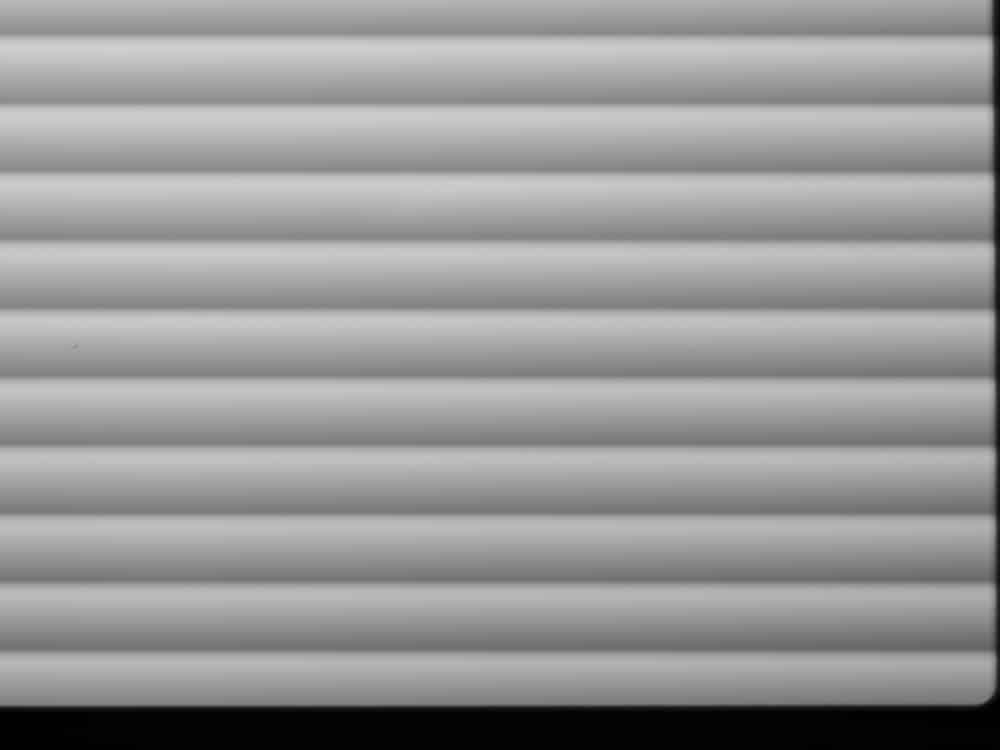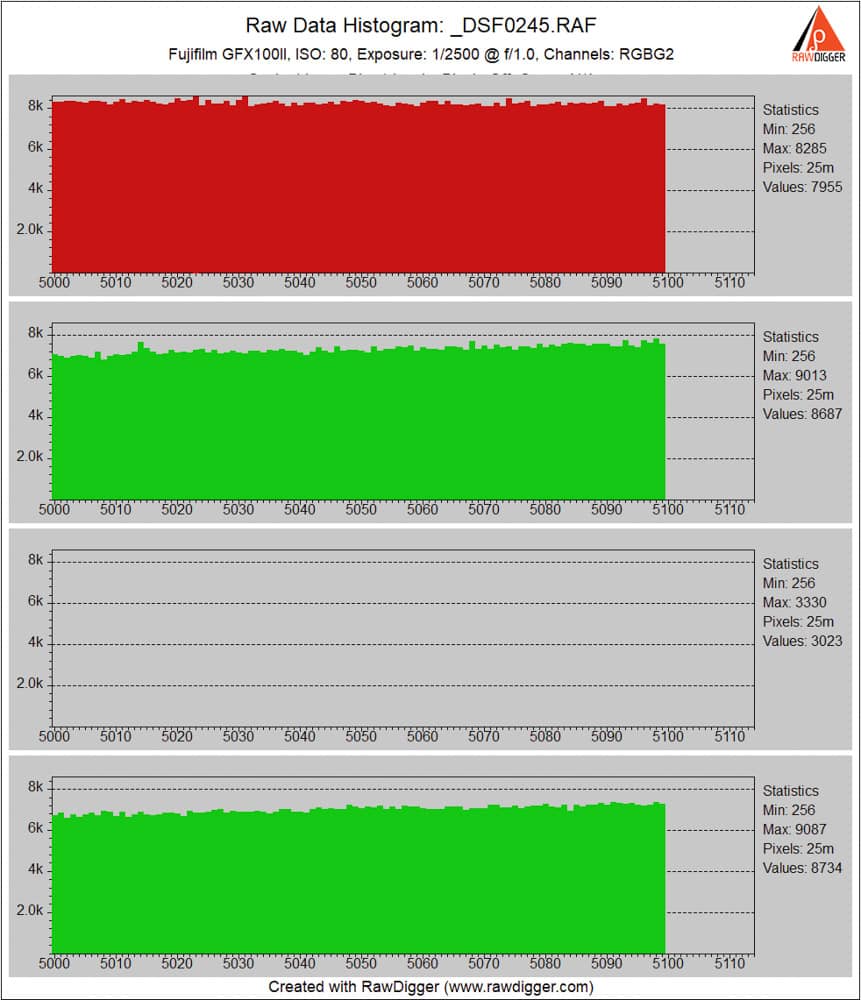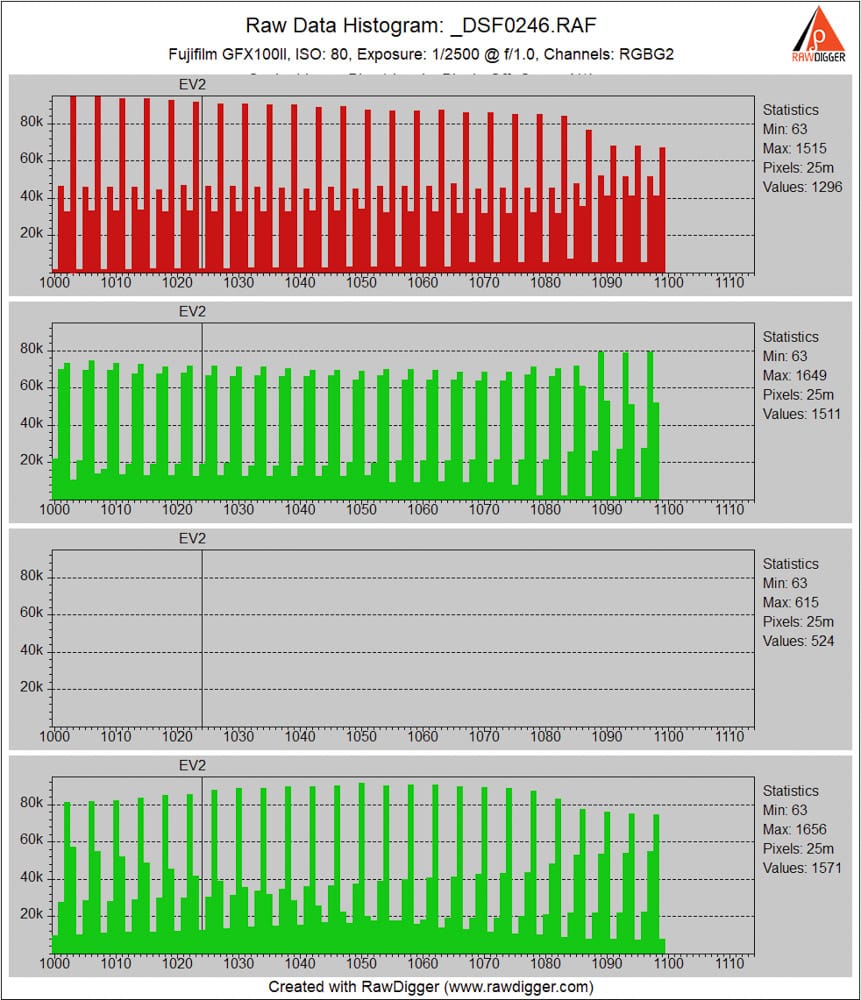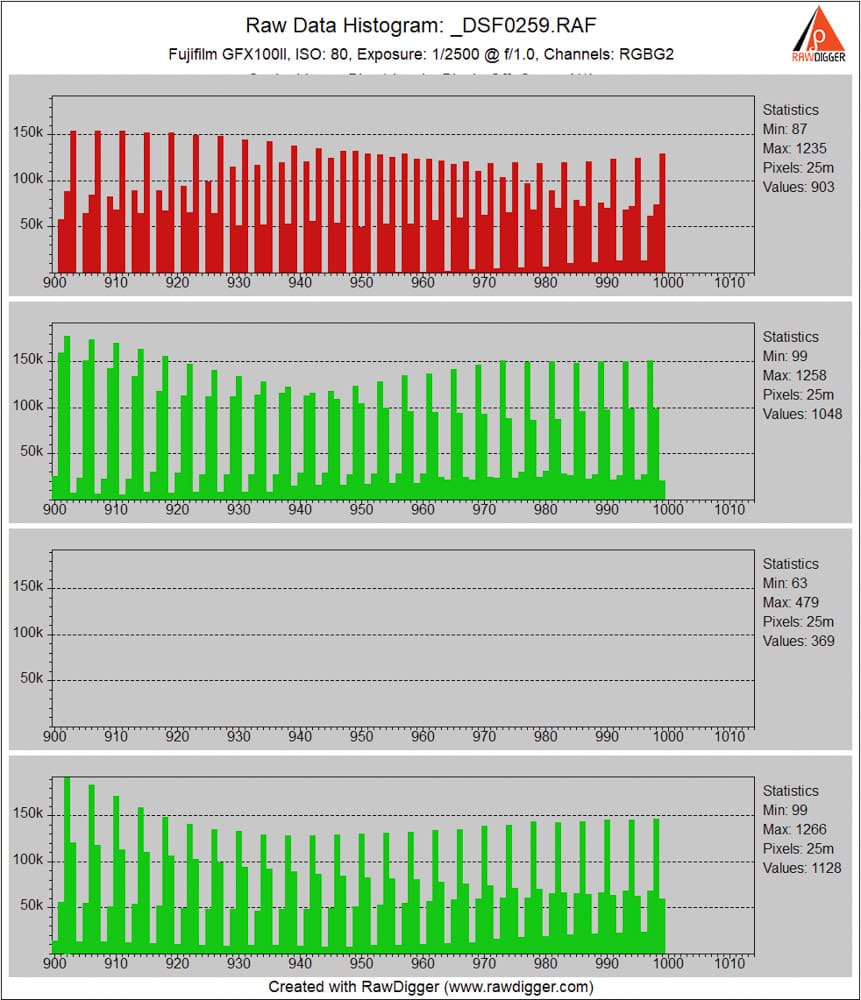This is the sixth post in a series of tests of the Fujifilm GFX 100, Mark II, which was released this week. You can find all the posts in this series by going to the Categories pane in the right hand panel and clicking on “GFX 100 II”.
In the previous post, I reported the disappointing finding that, in spite of Fujifilm’s claims to increased readout speed, the scan time of the electronic shutter in 14-bit and 16-bit single shot modes was essentially the same as the GFX 100S and the GFX 100.
In this post, I’m going to look at what happens in CH mode, which sports a 5 fps frame rate with the electronic shutter. I set the putative (you’ll see in a minute why I chose that word) precision to 14 bits.
The light source is the same 120 Hertz refresh rate consumer LED as in the preceding post. As in that post, I didn’t use a lens; I just pointed the camera towards the light source. Here’s the image

The scan time is 8.33*11 milliseconds, or 92 milliseconds, or about 1/11 seconds. This is about twice as fast as when the camera is in single shot mode and the precision is set to 14 bits.
How does the camera manage that? We can get a clue by looking at the histograms of the single shot and CH images.

This is a nice clean histogram with every bucket populated, indication true 14-bit precision.

In CH mode, it looks to me that the ADC is running in 12 bit precision, and that there’s some in-camera post processing that partially fills in the unpopulated buckets.
How about with the mechanical shutter in the 8fps CH mode?

Looks like the scan rate is faster than 1/120 second, which makes sense since the synch speed is 1/125 second.
The histogram, however, is similar to, but not the same as, the electronic shutter CH histogram.
Similarly to ES, in CH mode, it looks to me that with MS the ADC is running in 12 bit precision, and that there’s some in-camera post processing that partially fills in the unpopulated buckets.
So there is a mode that yields faster readout rates than the GFX 100S, but you have to set the camera up right to get it, and it comes at a cost.

Inline with the original specs for the sensor as far as I can see.
https://www.ximea.com/en/products/xilab-application-specific-custom-oem/sony-imx461-high-resolution-color-bsi-camera?responsivizer_template=desktop
Some upscaling of the 12 bit raws with the new faster proc after the fact…
Weird. Like line skipping for stills?
Maybe the sensor is the same after all, and the new processor just allows Fuji to pull these postprocessing tricks?
Or this is the downside of dual readout lanes? If that even is true. In some sense, they could interleave frame readout in ES mode, but not with MS. I wonder what adjacent frames look like in RAW, but I guess for any meaningful data between adjacents, the light should sync with frame reset.
Hi Jim thank you for the excellent job you do for us….
Considering that I won’t use the 8fps much but I’m very interested in the 5fps option for portraiture, my question is: will the CH mechanical shutter at 5fps be able to use true 14bit precision like in my “old” GFX100s or it will be at 12 bit like the 8fps option, forcing me to shoot at 2fps for my studio editorials? Thx again.